Scanning Electron Microscope and Energy Dispersive Spectrometer
Houston Electron Microscopy is equiped with a State of the art SEM/EDS system with many features, such as variable pressure, secondary and backscatter imaging, x-ray mapping, particle analysis, and elemental analysis of anything viewed under the SEM. SEM/EDS analysis can identify those microscopic particles or contamination causing process problems.
SEM/EDS Imaging
Houston Electron Microscopy, Inc. is equipped with JEOL JSM-6360LV Scanning Electron Microscope, A fully digital Scanning Electron Microscope, capable of usable magnifications of up to 100,000 times in Secondary Imaging mode with 3.0-nm resolution for topographic imaging.
- Topographic Imaging
- Atomic Number Profile Imaging
- Elemental X-ray Mapping
- Image Segmentation
Imaging Features:
Three modes of Backscattered Electron imaging also provide atomic number contrast and topographical imaging in high and low vacuum modes. High vacuum imaging provides the highest resolution at 3.0 nm. Typical observations are performed at magnifications in the range of 1000x to 10,000x, but magnifications as high as 100,000x can be obtained.

Allowing a small amount of air into the chamber (Low Vacuum mode) neutralizes charges on uncoated, non-conducting materials so that gold coating is not required for plastics, ceramics, and other dielectrics. Max sample size: 4 inches dia. x 2.5 inches high.
Here is an image of a mite found in moss. The image was taken at a magnification of 350x, without any gold sputtering. The head of this little guy measured approximately 50-microns or 0.050 millimeters.
Secondary Electron Imaging
Secondary electron images show the morphology and topography of a sample. The most common form of imaging, Secondary Electron Imaging (SEI) produces a high resolution image of the surface topography of a specimen. In failure analysis, this usually provides enough information to determine the mechanism of failure of a material. The SEM provides several advantages over light microscopes including greater magnification, greater depth of field, and finer magnification control. See more.
Backscattered Imaging
Back scattered electron images show the difference in atomic number over a sample. The higher the atomic numbers of the atom, the brighter the image results for larger atoms. See more.
Three modes of Backscattered electron imaging are available in high or low vacuum modes at 4.0 nm resolution:
- Compo (for Composition): Atomic number contrasting imaging. Lighter elements appear darker while heavier elements appear brighter.
- Topo (for Topography): Surface topography imaging similar to Secondary Electron imaging
- Shadow: Combination of Compo & Topo with illumination from the side.
X-ray Mapping
Houston Electron Microscopy’s is SEM is equipped with a state-of-the-art integrated an IXRF System Energy Dispersive Spectrometer (EDS). Using the latest SDD technology and an ultrathin window, elemental data from Beryllium (Z=4) through Plutonium (Z=94) is collected at extremely high rates for elemental analysis. Additionally, built-in software allows for stoichiometric calculations of compounds present such as oxides, carbides, etc.
Elemental and compound information can be viewed in several formats including elemental spectrums to identify the elements present, quantitative atomic and weight percent calculations, and x-ray mapping that combines the image with its chemical composition as shown above.
How the SEM works
In the SEM the electrons are emitted from a tungsten filament, and accelerated through a high voltage of 50-100kV . The electron beam is focused by a condenser lense to a spot between 50-100Å in diameter. The beam hits the sample producing backscattered electrons, which are scattered off the surface; and secondary electrons, which are emitted from the surface, as they are knocked out of the valence orbitals of the surface atoms, and X-rays.
The electron microscope uses a focused beam of high-energy electrons to generate a variety of signals from scanning the surface of a sample. These include:
- Secondary Electrons for topographical imaging,
- Backscattered Electrons for Atomic Number contrast imaging
- Characteristic X-rays for chemical analysis by Energy Dispersive Spectrometry
Secondary Electron Imaging
The secondary electrons are used to create an image of the surface, which has a 3D quality as the angle of the secondary electron projection depends on the angle of the incoming beam. Thus steep surfaces and edges tend to be brighter than flat surfaces, which results in images with a well-defined, 3D appearance, Secondary Electron Imaging.
Backscattered Imaging
A backscattered electron profile is also collected as the number of backscattered electrons increases with atomic number, so atoms of a higher atomic number appear brighter in the image. The image is digitally captured with a resolution of down to 5 nm, Backscattered Electron Imaging.
Featured Applications
- Failure Analysis
- Fracture surface characterization
- Corrosion deposti analysis
- Identification of process abnormalities
- Mapping and identification of geological structures
- Phase and particle analysis
- Morphology and weight ratio of the PDC
- Particle contamination in oils
Available for download is a Presentation of SEM & EDS applications and examples (pdf file) with more information.
Advantages
- Experience
- Modern SEM/EDS System
- No hidden charges
- Easy and quick availability
- Conveniently located in Northwest Houston
- We get answers
Houston Electron Microscopy
281-888-4261 or 281-704-0188
Google map
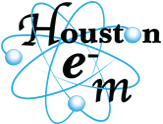
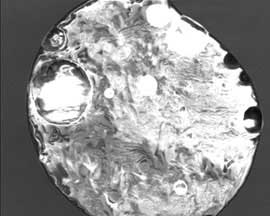
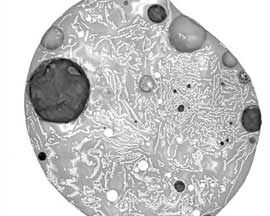
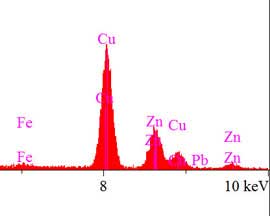
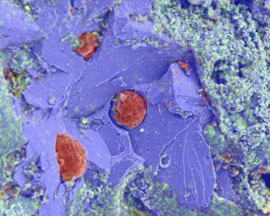


We get answers
281.888.4261
Toll Free: 1-844-318-8775